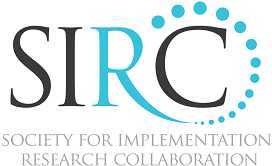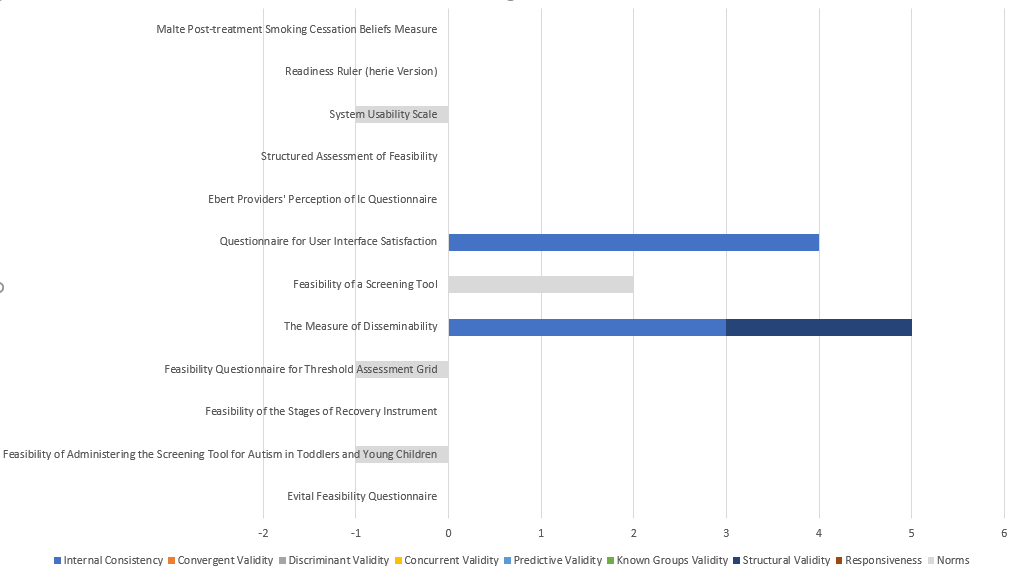|
CFIR >> Feasibility |
|
Feasibility is the extent to which a new treatment, or an innovation, can be successfully used or carried out within a given agency or setting. To see the head-to-head comparisons of the evidence-based assessment rating profiles for the instruments listed below, please click on the image below |
| Behavioral Interventionist Satisfaction Survey (Feasibility/Acceptability Scale) |
| McClean 2013 |
| The BISS is a 47-item instrument measuring perceptions of problem solving therapy. There is a 5 item Feasibility/Acceptability sub-scale). |
| Children’s Usage Rating Profile (Feasibility Scale) |
| Briesch 2009 |
| The CURP is a 23-item instrument measuring acceptability and feasibility of children’s intervention. (There is an 8-item feasibility sub-scale) |
| Ebert Providers’ Perception of IC Questionnaire |
| Ebert 2014 |
| This survey was used to measure providers’ perceptions of integrated care for smoking cessation. (Items are not available). |
| Evital Feasibility Questionnaire |
| Alonso 2010 |
| 29-item questionnaire used to assess perceived feasibility of a taxonomy and toolkit to evaluate health-related habits and lifestyle (eVITAL). |
| Feasibility of a Screening Tool |
| Hides 2007 |
| 5-item instrument assessing perceptions of a mental health screening tool. |
| Feasibility of Administering the Screening Tool for Autism in Toddlers and Young Children |
| Kobak 2011 |
| 13-item instrument assessing training experience for a screening tool for autism in toddlers and young children. |
| Feasibility of the Stages of Recovery Instrument |
| Weeks 2011 |
| 7-item instrument assessing feasibility of completing the Stages of Recovery Instrument (STORI) |
| Feasibility Questionnaire for Threshold Assessment Grid |
| Slade 2001 |
| 8-item instrument measuring the feasibility of the Threshold Assessment Grid (TAG) for routine assessment of severity of mental health problems. |
| Malte Post-treatment Smoking Cessation Beliefs Measure (Feasibility Scale) |
| Malte 2013 |
| 28-item instrument assessing provider perceptions of smoking cessation treatment (feasibility/complexity sub-scale; items available from the authors). |
| Parenting Strategies Questionnaire |
| Whittingham 2006 |
| 3-item instrument assessing the acceptability, usability, and behavioral intention to use the Stepping Stones Program for children with Autism Spectrum Disorder. |
Questionnaire for User Interface Satisfaction
16-item instrument used to assess staff’s perceived ease of use of the e-Volution-TREAT system as a care planning tool for clients with mental health problems and addictions.
Instrument used to rate readiness to implement knowledge and skills related to tobacco cessation, as well as the feasibility and importance of incorporating clinical tools into practice (items not available).
Structured Assessment of Feasibility
The SAFE is a 16-item instrument to assess the extent to an intervention is feasibile for implementation in mental health services.
10-item instrument designed to evaluate the usability and user satisfaction with web-based applications and other technologies.
The LOCI Feasibility, Acceptability, Utility Scale (Feasibility Scale)
10-item instrument to assess feasibility, acceptability, and perceived utility of leadership training for implementation (2-item feasibility scale).
The Measure of Disseminability
Trent, L., Buchanan, E., & Young, J. (Results are unpublished).
32-item instrument measuring likelihood to recommend treatment, effectiveness of treatment, and credibility of treatment.
Training Acceptability Rating Scale (Feasibility Scale)
15-item Instrument used to assess feasibility, acceptability, participant satisfaction, and perceived impact on participants’ confidence and competence following a training program in CBT (Items not available).

